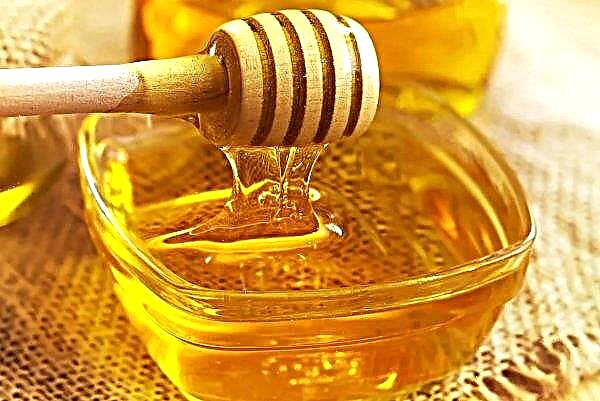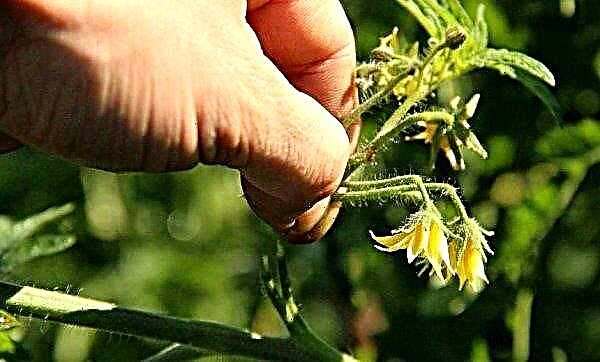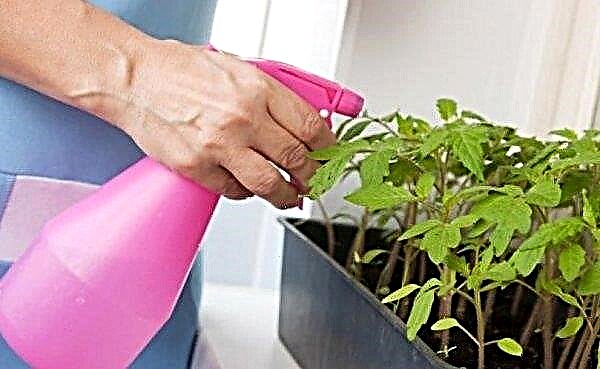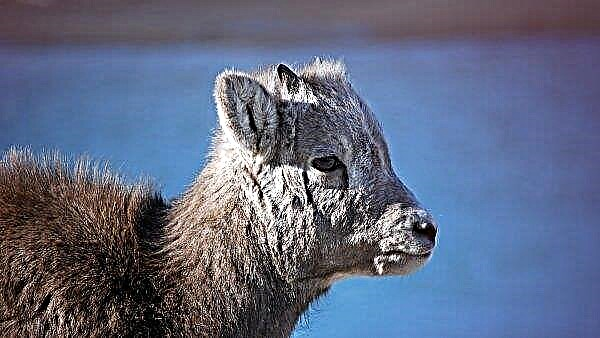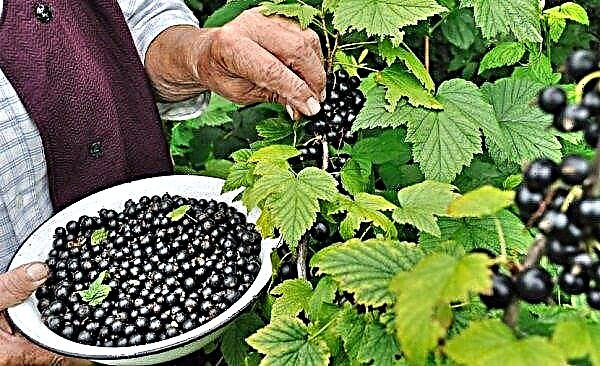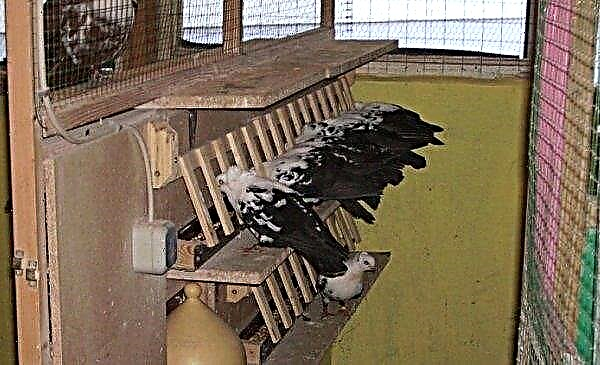This western Zmatlik variety is still rarely seen in personal plots, since it is actively cultivated relatively recently. However, those who have already planted it on their site, note such an important feature as the ability to maintain a decorative look year-round. This article will help you learn more about this shrub, the rules for planting and caring for it.
Botanical Description
Thuja western variety Zmatlik (Thuja occidentalis Zmatlik) has such a botanical description:
- refers to the dwarf type, the growth is 8-15 cm per year;
- narrow conical crown, columnar, thickened;
- the branches are twisted in a spiral shape, grow densely;
- the needles are fleshy, scaly, saturated green, grows densely;
- an evergreen plant, retains a decorative look throughout the year;
- frost-resistant (-34 ... -37 ° C) and drought-resistant variety;
- peak height (up to 1.5 m) reaches 10 years, at this age the crown girth is up to 0.8 m;
- the root system of the surface type, well developed, small, its width and depth are approximately the same;
- flowering time - from April to May, blooms with subtle flowers (red or green with a yellow tint);
- cones are brown, in the shape of an ellipse, consist of several leathery scales arranged in steps, the taste is oily bitter.

Origin of name
The name of this species of western thuja is due to a certain Zmatlik (Mr. Zmatlik) from the Czech Republic. It was he who in 1984 discovered the plant and propagated it with seedlings. Almost nothing is known about this originator. Despite its resemblance to the thuja Degroot’s Spire, Zmatlik is an independent variety.
Important! The plant is characterized by moderate toxicity, small «a portion» poisonous substances found in the trunk, cones, branches.
Landing
The plant prefers sunny areas, but can grow in partial shade. Otherwise, the color of the needles dims, and the shrub itself stretches out.
The soil at the planting site should be acidified (5–7 pH), rich in calcium, fertile, moist, well-drained. On 1 m² you can place no more than two bushes. Any plants can be planted as neighbors.
Seedlings, choose not too small so that they do not bend from the wind. During planting, hold them by the trunk, and not by the top, so as not to tear out the roots or break the plant. In the open ground, thawed Zmatlik is planted in spring or autumn, in the latter case, followed by shelter from burlap.
How to land:
- Dig a hole about twice as large as the root ball. Check if there is enough depth by dropping a seedling into it.
- To the volume equal to three shovels of the earth dug out of the pit, add “one shovel” of mulch, compost or high-quality soil for potted crops.
- Put a little prepared soil on the bottom of the pit and water it.
- Lower the root ball into the pit, sprinkle with a layer of earth, pour, fill the pit with soil to the top, re-introduce water. This is necessary in order to get rid of voids inside the soil. Make sure that the root neck remains above the soil.
- Spread a layer of mulch up to 5 cm thick without sprinkling the root neck and spreading around the trunk.
- In the spring, remove burlap, wire and rope from the top of the plant, fixing the protective fabric shelter.

In the case of container growing:
- Spread the root system slightly, taking care not to damage. If it is tied, cut the rope.
- Prepare a hole of such a size that the root neck remains above the surface of the soil. Use a soil mixture for growing potted plants or mix 1 part sand and peat with 2 parts of leaf or turf land.
- Covering the soil with layers, water each layer. The top layer also needs to be moistened.
- Sprinkle the mulch so that it does not touch the stem of the plant.
Important! Too thick a layer of mulch will complicate air exchange in the upper soil layer, which will not allow fully «breathe» the roots of thuja.
Thuja care
Caring for thuja Zmatlik consists of standard procedures.
These include:
- watering;
- top dressing;
- loosening;
- mulching;
- pruning
- pest and disease control;
- preparation for winter.

As for the last point, despite the good winter hardiness, the thuja Zmatlik needs to tighten the crown with tape in order to protect the spirally twisted shoots from damage under the weight of the snow.
Did you know? In 2002, researchers from Germany disseminated information that a mixture of alcohol, water and extract from thuja leaves does not allow the type A influenza virus to multiply.
Watering and feeding
Variety Zmatlik needs moderate regular watering, it depends on how dark the color of its needles will be. Excess moisture does not tolerate well, but dried soil should not be left. The frequency of watering must be adjusted to suit the specific climatic conditions in your area. In dry weather, you can water 1-2 times a week, without creating stagnation of water. Watering should be carried out slowly so that the soil can be moistened to a depth of 1 m.

To retain moisture, it is recommended to dig a furrow along the borders of the trunk circle. However, during intense rains, it is recommended to sprinkle the trench with soil so that a puddle does not form.
To feed the recently planted arborvitae, use low-concentration mineral fertilizers for conifers or organics so as not to damage the roots. After a year, if the soil needs it, You can make top dressing for adult thuja, for example, up to 100 g nitroammophoski per 1 bush or complex in the amount of 50-60 g per 1 m². They usually feed in the spring.
Top dressing is applied only to the soil, excluding contact with the green parts of the plant, otherwise they will die from a burn. If thuja Zmatlik is planted in open ground on fertile soil, then it does not need to be fertilized.
Loosening and mulching
The surface type of the root system of this variety requires that at the beginning of the growing season the soil in the near-stem circle is loosened to a depth of 10 cm. At the same time, weeds must be removed. After the procedure is completed, the ground is sprinkled with fresh mulch from compost, peat, bark or other natural materials.
Pruning
Thuja Zmatlik responds positively to sanitary and shaping pruning. So, every spring it is necessary to carefully inspect the branches and remove dried, damaged, diseased. In the fall, crown trimming is carried out in order to give the correct shape.
Did you know? Thuja extract is used in the men's fragrances of Hugo Boss and Safari Ralph Lauren.
Possible diseases and pests
A dangerous disease for western thuja is pestalocium wilt, which is caused by the fungus Pestalotiopsis funerea. The plant has necrosis of the bark and shoots, the needles turn brown. On closer inspection, you will notice black in color with a greenish tint of pads, which are a cluster of fungal spores.
For the prevention of the disease:
- In April, after the snow melts, spray with Bordeaux liquid or other means containing copper, as well as systemic drugs (Topsin-M, Bayleton, Privent).
- At the end of July - repeat the procedure.
- In mid-August - treat with systemic drugs.
- In early October - repeat treatment with systemic drugs.
- At the end of October - spray with systemic drugs and Bordeaux fluid.

The following pests are dangerous for thuja Zmatlik:
- bark beetle;
- spider mite;
- thuja and cypress aphids;
- thuja shield;
- thuja false shield;
- mole-mottled thuja.
 For prevention in spring and autumn, thawed Zmatlik is treated with preparations containing copper.
For prevention in spring and autumn, thawed Zmatlik is treated with preparations containing copper.The use of wood in landscape design
Zmatlik is a very attractive plant that brings diversity to the space of any garden. Landscape designers are attracted by the decorativeness of this species, the ability to take part in any landscape compositions.
Such a thuja will be an excellent choice for owners of small plots, as it will look good in a single planting, as a part of compositions, in rock gardens, flower gardens, coniferous mixborders, rockeries, in reservoirs, on slopes, in tubs. It is also used to decorate suburban areas, parks, and sanatoriums.
Thus, the thuja of the Zmatlik variety is an evergreen columnar shrub whose branches are twisted in a spiral. Due to its small growth, it looks good in small areas, but it is not lost if there is more space. In this case, you will not need any additional efforts to care for him, except for standard procedures.

